












































The Farming Families is distributed free exclusively to the farmers, ranchers and producers in rural Sioux, Plymouth and Lyon Counties. All rights reserved. Content in this magazine should not be copied in any way without the written permission of the publisher. The Farming Families assumes no responsibility for unsolicited manuscripts or photographs. Content in articles, editorial
advertisements are not necessarily endorsed by The
Orange City Family Medicine: 712-737-2000


Hospers Medical Clinic: 712-752-8800


Mill Creek Family Practice: 712-448-2000

Orange City Walk-In Clinic: 712-707-6070
Hospital/Emergency Room: 712-737-4984


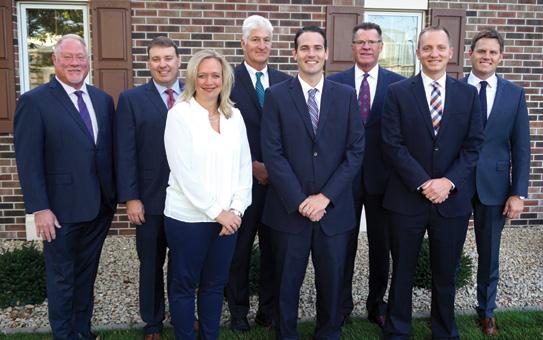
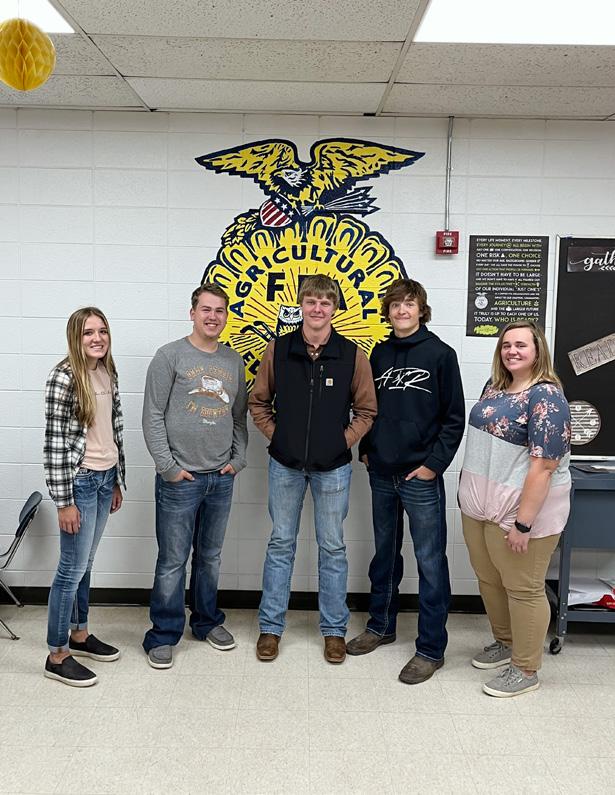 By Bob Fitch
By Bob Fitch
George-Little Rock ag instructor and FFA adviser Miranda Dreesen was one of just 33 teachers from across the nation who was trained this summer in a new Precision Ag curriculum. Officially known as “Mechanical Systems in Agriculture,” it’s the latest in a series of new agriculture, environment and natural resource courses developed through an initiative called Curriculum for Agricultural Science Education, developed with funding from the National Science Foundation.
The Precision Ag course is in just its second year of field testing. “Hopefully, we’ll help them get all the kinks worked out,” she said. New curriculum units previously introduced were food science and safety, animal science, plant science, animal and plant biotechnology, natural resources and ecology, environmental science, and ag power and technology.


Miss Dreesen said Precision Ag was developed because the industry is in need of more technicians for machinery and other technology. “We’re looking at all the different schematics of equipment, including electrical systems, hydraulics, fuel, and fuel systems. In some ways, the course is trying to bring back some of the hands-on equipment repair skills that used to be taught. It will help build some basic skills in preparation for going to a technical college.”
Throughout the course, students apply technical skill while becoming competent in the processes used to operate, repair, engineer, and design agricultural tools and equipment. Areas of study include electrical, structural and energy systems; Providing

The George-Little Rock High School ag education program is serving as a test plot of sorts for a new class developed by the National Association of Agricultural Educators.
machine service and maintenance; Global Position Systems; and mechanical design and management.
“I love the new class. It’s great. I’ve always been a fan of technology,” said Ashton Gierhan, a senior at George-Little Rock High School. “It’s helped me bring new ideas to the farm like GPS systems, helping to increase our yields and protect the soil. I think it will help us with equipment decisions. Machinery’s getting real high and it’s nice to do some of the maintenance yourself. It’ll probably help me with livestock, too – making sure we’re measuring the best rations for feed.”
Ashton lives with his grandparents, Mark and Ruth Dickmann, who farm near George. “I’m big into hogs. It keeps you busy when you’re not in the field, that’s for sure.” He’s planning to attend Iowa Lakes Community College to major in agribusiness technology. After college, his plan is to come back to the farm and build his own hog barn.
The GLR Precision Ag class recently toured AgriVision in Sioux Center. Miss Dreesen said, “The kids heard how the dealership listens to customers and what process they use to then diagnose what’s wrong. We also talked to their H.R. department about what they’re looking for when they hire technicians.”
According to senior Josh Hansmann, “The tour of AgriVision showed the opportunities you have off the farm. I like the class because its helping us understand the basics of farm equipment.” Josh and his parents, Mark and Darcy Hansmann, live on an acreage near George. After graduation, he’s planning to move to Faith, S.D., to work on a ranch and get calving experience.
Junior Emily Winkel is the vice president of the George-Little FFA chapter. She said the ag classes are fun and interesting even though she’s planning to study radiology at Northwest Iowa Community College. Her parents are Jeff and Karen Winkel of Ashton, who have a cow-calf operation and custom-finish hogs. Hard work and humor are the life lessons Emily is planning to take with her from growing up on farm.

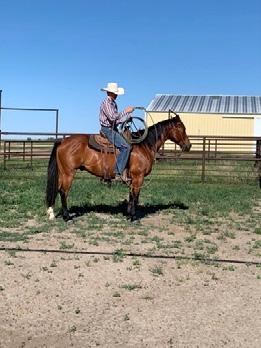
Senior Tyler Greve is also an FFA officer. “FFA helps teach both teamwork and leadership. Leadership is needed for everything out in the world today.” Tyler and his parents, Aaron and Jen Greve, live in Little Rock. He’s planning to attend Iowa Lakes Community College to study agricultural production technology. After college, he hopes to farm and truck for his uncles, who operate Odens Brothers outside of Little Rock. In addition to hauling grain, Odens Brothers also haul machinery for companies such as C&B Operations.
Tyler appreciates the value of living in small, quiet community.
“Everybody knows everybody. If you’re broke down, somebody will stop by.” Ashton agreed: “Yeah, you always have that neighbor who will come by and help you if something goes wrong. That’s what’s nice about living in a rural area.”
The small town benefits extend to the small school. “I think it’s easier to talk to people at a smaller school. At a bigger school, you’re not going to know everybody. Teachers are able to reach out better to students here than at bigger schools. They can make sure you’re getting what you need,” Ashton said.
A unique aspect at George-Little Rock is that the FFA chapter owns a farm north of George. Tyler said they usually have cattle at the farm.
“That's nice. You learn a lot from the cattle. We go to the sale barn and buy them ourselves; figure out a feed plan for them; and implant them. After we sell them, we figure out our profit. In a bigger city, you're not going to be able to do that.” Josh said, “It’s a good hands-on experience.”
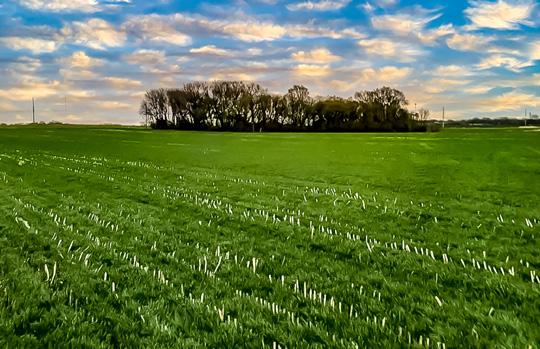
The GLR FFA has about 30 members. The students said involvement in FFA has proven valuable in building their skills and knowledge in communications, business and job interviewing.

Miranda Dreesen is in her first year at GLR after previously teaching ag education in Dunlap, Iowa, and Ellsworth, Minn. She’s a 2016 graduate of George-Little Rock High School and a 2020 graduate of South Dakota State University. “It’s a weird feeling being back here. The classroom and the setting hasn’t changed – just the roles have changed. It’s nice to be back home.”
She grew up north of Little Rock on the grain farm of her parents, Robert and Shawn Dreesen. Her degree from SDSU was in agricultural education, leadership and communications with a second major in animal science. “My ag teacher, Josh Rockhill, pushed me towards education. I always figured I’d be a science or math teacher, but I combined those skills with what I’m passionate about, the agricultural industry.”






In the past century, the advancement of corn as a crop is almost mind-boggling.

Corn was domesticated 9,000 years ago in southern Mexico and the earliest plants had ears that were only an inch long and there was only one ear per plant. In the post-Civil War era in the United States, corn yielded about 26 bushels to the acre and remained at that level for the next 65-70 years. With the introduction and adoption of hybrid varieties in the 1930s, the average yield doubled to 50 bushels an acre by the mid-1950s; doubled again to 100 bushels an acre by 1980; and climbed to an average of 180 bushels an acre today.
Paralleling the increase in yields the past 100 years is the ability to harvest the crop. In the 1920s, an average farmer could husk about 300 ears of corn in 80 minutes. In 1935, the national corn husking champion was celebrated for harvesting 41½ bushels in 80 minutes. Today’s combine, in a high yielding field, can harvest more than 7,000 bushels of corn in an hour. That’s a phenomenal increase in productivity in less than a century.
The adoption of new farming methods and machinery – including the automated combine – was actually accelerated through the glorification of traditional hand harvesting in the period between the two World Wars. The glorification came in the form of the National Corn

Husking Contest in which farmers from about 10 Midwestern states competed in the years 1924-1941.
Promoted at times as “the fastest growing sporting spectacle in the world,” the battles helped buoy the spirits of farmers and small communities in the midst of the Great Depression. Values like individualism, determination, work ethic, and self-sufficiency were highlighted. Starting from 800 attendees in 1924, attendance skyrocketed to more than 100,000 each year from 1935-1941.
The corn husking contests existed as part of a larger contest culture which encouraged farmers to improve their farming methods and increase production, according to “The Organized Corn Husking Contests” by Denise Lorraine Dial. A variety of agricultural contests played an integral role in the rural Midwest's absorption of industrial culture by giving farmers the opportunity to experiment with emerging innovations.
While the huge crowds at the National Corn Husking Contest gathered to watch a test of masculinity via traditional hand-husking, the event grounds included large displays of machinery to entice farmers with the latest modern equipment from companies such as International Harvester, Allis Chalmers and Firestone Tire. The corn husking contests united the contest culture of production agriculture with a culture of fairs, town celebrations, and harvest festivals.
The National Corn Husking Contest was the brainchild of Iowa’s Henry A. Wallace, a famous farm advocate, journalist, and founder of Pioneer Hi-Bred. He later was FDR’s secretary of agriculture and second vice president. The first National Corn Husking Contest was held on his farm in Polk County, Iowa, in 1924.

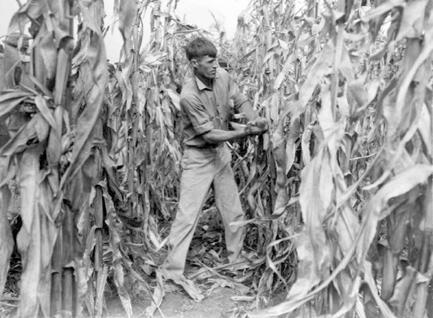
In its first decade, the closest sites to northwest Iowa were Fremont, Neb., in 1926; Grundy Center, Iowa, in 1931;
West Point, Neb., in 1933; and Fairmont, Minn., in 1934. Finally, it arrived to the intersection of Iowa, South Dakota, and Minnesota when Dell Rapids, S.D., was the host in 1938.
Thousands of people arrived at the Jim and Nellie Jensen farm northeast of Dell Rapids on Nov. 3, 1938, a damp, windy and cold day. Officials parked 35,000 cars and estimated the crowd at 125,000. It took five pastures covering 1,300 acres and 800 volunteer traffic directors to handle the parking. There were 48 concession stands housed under a tent stretching four city blocks. Tents were needed for the numerous exhibitions, the temporary fire department, post office, food stands, and the emergency hospital and its corps of physicians. Ten to 12 wells were sunk to provide the necessary water supply.
The huge exhibit of farm machinery was the biggest ever seen at a corn husking contest. The NBC radio network carried a live "bang by bang" description of the national contest. (The contest was sometimes called the “Battle of the Bangboards” because ears tossed by contestants would crash into a raised board on the far side of the wagon.)


Contestants used a steel peg or hook strapped to their hand to tear the shucks open on the corn. Many huskers wore gloves but some shucked barehanded. The method mostly used in husking was to grip an ear with the left hand, yank off the husk with the right hand, twist the ear from the stalk with the right hand and throw the ear into the wagon with the right hand.
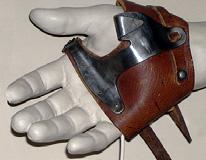

Because the ground was muck from the rain, the contest at Dell Rapids was a grind from start to finish. During the 80-minute contest, there were no time-outs for rest and no stops for water. The huskers were tough – some would finish the competition with knuckles bleeding and fingers raw.
Ted Balko of Redwood Falls, Minn., won the contest at Dell Rapids by husking a gross of 1,620
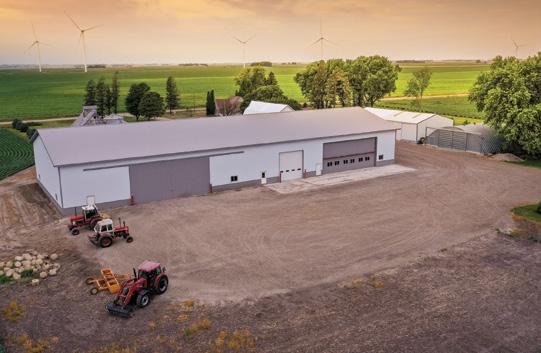
pounds of corn and a net of 22.64 bushels. Balko previously won the championship in 1934.
The advent of World War II ended the National Corn Husking Contest and it was not revived after the war because most farmers had moved to machine harvesters and farming was at full speed as the U.S. worked to feed much of the world. Mechanized combines moved quickly from horse-drawn to tractor-drawn and ultimately to selfpropelled units.
Farming’s culture of competition supported a belief that acceptance of change, participation in the process of change, and change in work technology would make a farmer more competitive and increase the chances of economic reward.
Winners of the National Corn Husking Contest became idolized heroes who were sought after by
national media for interviews, paid to endorse products, and received proposals of marriage from female fans, according to the documentary “When Farmers Were Heroes: The Era of National Corn Husking Contests.”
SOURCES / RECOMMENDED VIEWING & READING
• “From Dell Rapids Attic” by Dale Nighbert. bit.ly/Dell_Rapids
• “The Organized Corn Husking Contests: Conduits of Industrial Culture in the Rural Midwest,” by Denise Lorraine Dial. Iowa State University, 1998.
• Wessels Living History Farms. bit.ly/OldStylePicking
• History Nebraska. bit.ly/LillieCornHusker

• Sioux Falls Argus Leader via newspapers.com.



• Newsreel of 1938 Corn Husking Contest. bit.ly/HuskingNewsReel
• ”When Farmers Were Heroes,” Heritage Documentaries Inc. bit.ly/FarmerHeroes

• Corn Husking Tools photo. bit.ly/CornHook
• National Museum of Anthropology. bit.ly/MaizeRelief
scan the QR code to see video from the 1938 National Corn Husking Contest on YouTube.


 BIRDS-EYE VIEW OF OAK GROVE STATE PARK
PHOTO BY JON KLEMME, OCTOBER 9, 2022
BIRDS-EYE VIEW OF OAK GROVE STATE PARK
PHOTO BY JON KLEMME, OCTOBER 9, 2022
Brad Cave is an ag/commercial banker and assistant vice president at Northwest Bank in Le Mars. He’s been in banking for more than 13 years and with Northwest Bank for over a decade. He grew up on the family farm west of Marcus. He’s a graduate of Marcus Meriden Cleghorn High School. He earned a bachelor’s degree in business administration / agribusiness with an endorsement in coaching from Northwestern College in Orange City.
Brad’s wife, Sarah, is a library teacher and para-educator at Gehlen Catholic in Le Mars. Sons Parker (11), Lawson (8), Cutler (7), and daughter Emmerson (10) all attend Gehlen Catholic.

Some of my fondest memories are simply doing the daily activities on the farm such as baling hay, walking beans, mowing and doing cattle chores. The best part of the day was coming into the house after a long hard day’s work and enjoying one of mom’s chocolate chip cookies with an iced cold pop.
Orv Otten recruited me to play football at Northwestern College. He told me that diamonds are found in the rough. Coach Otten pushed me to be my best and to always give it my all. His leadership and drive led me to continue that competitive call. After college, I went on to coach football at MMC High School and then at Dordt University before retiring to coach my kids and their
school athletic teams. I can only hope that I am passing on some of the life lessons that Coach Otten taught me.
I primarily worked on the family farm my whole life. After college I wanted to gain some business experience. I worked for Farm Bureau Financial Services and Titan Machinery for a span before beginning my banking career. A local bank recruiter approached me
one day about an open position at a bank and here I am 13 years later. Being an ag/commercial lender allows me to help people achieve their dreams on a daily basis.
A successful life is being able to do what you have a passion for and hopefully impacting others along the way. We are all blessed with unique talents and gifts. The successful ones are those who are willing to share them with others for the common good.
Over the course of my career, I have been fortunate to be part of multiple different boards, service groups and organizations. I am currently a board member for the Le Mars YMCA and the Le Mars Area Chamber of Commerce. I also coach youth football, basketball, baseball, and softball for my kid’s youth teams. Community growth only happens by being involved and helping others. At the end of the day, I believe that if you have the knowledge or abilities to teach or improve others, it would be a waste not to.





My wife and I spend a lot of our free time following our four kids around to their sporting events. Any remaining spare moments are spent working on the family farm or hunting.
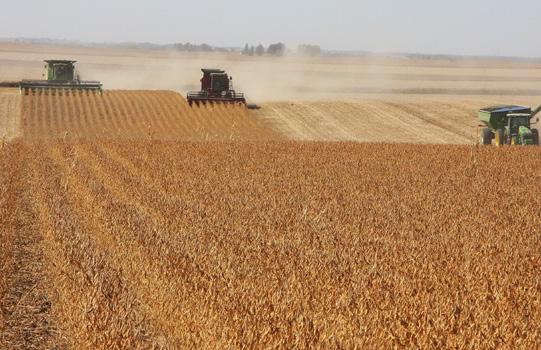
My mother’s side of the family was immersed in music. So, between farm chores, I played the trumpet, French horn, and piano.
Sioux Center native Lindsey Broek wears a lot of hats at the American Maine-Anjou Association (AMAA), based in Platte City, Missouri, a suburb of Kansas City.
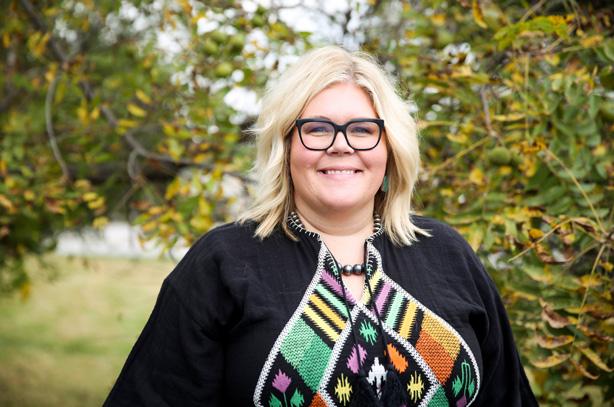
In her role as “Voice Editor/Director of Show, Communications & Events,” Lindsey is responsible for the AMAA’s participation in five national shows – American Royal in Kansas City; North American International Livestock Exposition in Louisville; Cattlemen’s Congress in Oklahoma; National Western Stock Show in Denver; and the Fort Worth Stock Show. In addition, she directs the association’s Junior National and other youth events, plus is editor of The Voice magazine and other AMAA communications.
Maine-Anjou breeders and allied exhibitors provide “awesome
support” for the association’s youth programming. The Maine-Anjou & Chianina Junior National was in Louisville this past summer and 600 youth participated, showing about 800 head of cattle. “We’re probably one of the smaller breed associations, but we play right along with some of those bigger breeds because of our support system and the number of kids who are involved. I love the youth side of it. The showing part is how we get them in the door and then we build upon that. It’s probably the most fun part of my job.”
The American Junior Maine-Anjou
Association (AJMAA) has nearly 2,000 members. In addition to the Junior National, Lindsey is passionate about the organization’s summer youth leadership conference. She values being raised in the Sioux County farm culture of corn, soybeans, cattle and pigs, “But there's such a whole big world outside of those things. At the leadership conference, we're really trying to expose kids to the world of agriculture outside of what they've always known.” She used the example of a friend who grew up in a community similar to Sioux Center and went to Kansas State University. “She got her degree in bakery science and she now works for Frito Lay – she literally decides the amount of cheese that goes on your Dorito. And it's a very good, very lucrative job. You don't even think about stuff like that coming from an ag background.”
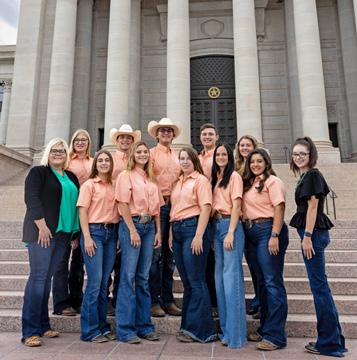
The summer leadership conference uses the acronym “MAINE” which stands for Maine-Anjou Industry Networking Event. In collaboration with Oklahoma State University, it was in Stillwater, Okla., in 2022. The collaborator next summer in Denver will be Colorado State University. A youth-led social media campaign from the event
YOU WILL ALWAYS BE CONNECTED TO YOUR GRAIN STORAGE. MONITORS YOUR GRAIN FROM THE PALM OF YOUR HAND. SIMPLE AND ACCURATE. FREE TECH SUPPORT FOR LIFE.



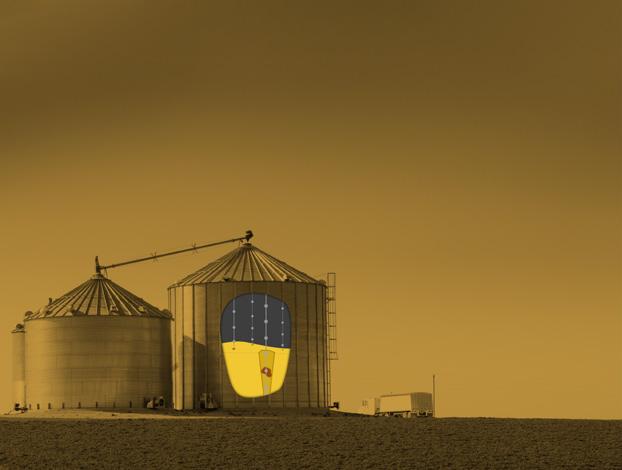
There is nothing more important than protecting your grain harvest. Tri-States Grain Conditioning systems will help you remotely monitor your grain, save on energy costs and improve your overall grain storage.
will share the story of agriculture and how food is raised and grown. The group will also travel to the CSU campus and a working ranch.
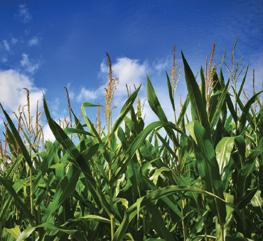

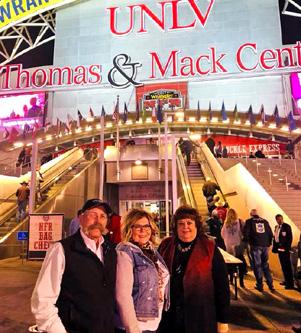
Lindsey said showing cattle is fun, but the conference helps expose youth to other career paths. “There's nothing better than watching kids ages 14 to 18, before they get to college, being exposed to something new. You can see the wheels start to crank in their head. It's fun to watch them discover there's something out there that interests them. I don't have children myself, but the leadership conference is a way to give to the next generation.”
When she’s not writing, taking photos or organizing the Junior National for the Maine-Anjou Association, she doesn’t look too far for fun. “I go and volunteer at other cattle and leadership events. My whole life probably revolves around some sort of cow show or youth event. If you look at the other junior nationals, the crème de la crème are the Angus and Hereford shows. They've got the biggest budgets and they've got the biggest numbers. A lot of what I’ve learned or been able to accomplish within AJMAA was learned from going and helping my friend and great mentor Amy Cowan at the American Hereford Association. I've learned a ton of stuff by volunteering my time and networking.” She met Amy through her life-long friend, Sarah (Faber) Kober.
Her own background includes a lot of time in the show ring.
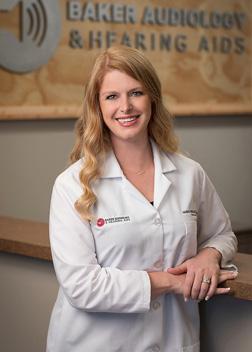
“I grew up on a farm right outside of town. My parents had a small herd of Charolais cattle when I was younger. We showed those competitively at the state and national level.” She showed a lot of cattle, but playing softball for Western Christian High School took priority during the summers of her high school years.

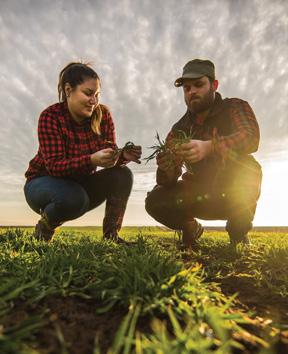



Her parents are Glen and Diane Broek. Glen is a real estate appraiser and Diane works at TransOva Genetics. “My parents have always been my biggest supporters. They always told me I could do anything that I wanted to, or that I put my mind to.” In addition to showing cattle during her high school years, she bred Golden Retrievers and sold puppies as her first source of income.
Others who influenced her journey include Mr. Vis, her high school government teacher who taught

her not to feel compelled to do the same thing everyone else was doing. As a student at South Dakota State University, Dr. Kelly Bruns “was a huge part of my success” and she learned a lot working for Steve Goodfellow, a Brookings area Angus breeder. She also worked at TransOva Genetics during summer break which in turn connected her
with the Krebs Ranch of Gordon, Neb. She traveled with the Krebs team to her first-ever National Western Stock Show and worked for them during Christmas break and spring break all through college. She learned customer service skills working for Sullivan Supply of Dunlap, Iowa.
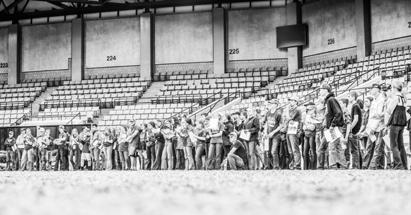
“All of those people and experiences probably led to this position in a weird, kind of roundabout way,” Lindsey said.

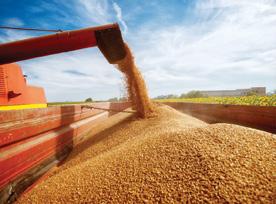

Her friend, Kyla Fawcett, was a senior at SDSU when she was a freshman. That friendship and connection led her to succeed Kyla as the editor at the Maine-Anjou Association. “This job was going to be a stepping stone where I would grow and then move onto something else. Well, I just started on year 14.”
Instead of learning and moving on, she learned and grew her role at AMAA – expanding her role from editor of The Voice to taking on show organization responsibilities, the Junior National and more. “I don’t like to become stuck in a rut, so I’m always looking for new ideas and new ways to do things.”
Donations and other support provided annually to multiple FFA programs, local fire departments, town projects, livestock shows, school programs.
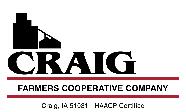

• 3 tablespoons unsalted butter

• 2 stalks celery, finely diced
• 3/4 cup chopped scallions
• 3/4 cup dried cranberries
• 2 teaspoons chopped fresh sage
• 4 slices potato bread, cubed (about 2 1/2 cups)
• 1 3/4 cups low-sodium chicken broth
• 2 tablespoons chopped fresh parsley
• Kosher salt and freshly ground pepper
• 4 bone-in center-cut pork chops (about 3 pounds)

• 3 tablespoons heavy cream
1. Melt 1 tablespoon butter in a large nonstick skillet over medium heat. Add the celery and scallions and cook until slightly softened, 2 minutes.
2. Add the cranberries and sage and cook 2 minutes.
3. Add the bread and cook, stirring occasionally, 2 minutes.
4. Add 1/2 cup chicken broth and the parsley and stir until the broth is absorbed, 1 minute. Season with salt and pepper; transfer to a bowl.
5. Wipe out the skillet.
6. Holding a knife parallel to the cutting board, cut a deep 2-inch-wide pocket into the side of each pork chop. Season the chops on both sides with salt and pepper and fill the pockets evenly with the stuffing.
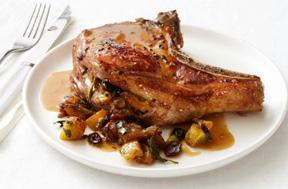
7. Melt 1 tablespoon butter in the skillet over mediumhigh heat. Add the chops and cook until golden brown, 2 minutes per side.
8. Add 1/2 cup chicken broth; reduce the heat to medium low. Cover and cook until the chops are cooked through, about 5 more minutes. Transfer to plates.
9. Add the remaining 3/4 cup broth and the cream to the skillet and increase the heat to medium high. Simmer, stirring, until slightly thickened, about 2 minutes.
10. Stir in the remaining 1 tablespoon butter. Season with salt and pepper.
11. Pour over the chops and serve.
 By Theresa Kingma from Hawarden Quasquicentennial Cookbook
By Theresa Kingma from Hawarden Quasquicentennial Cookbook
INGREDIENTS:
• 3 cups sweet potatoes
• ½ cup sugar
• 2 eggs, lightly beaten
• 4 Tablespoons butter or margarine
• ½ cup milk
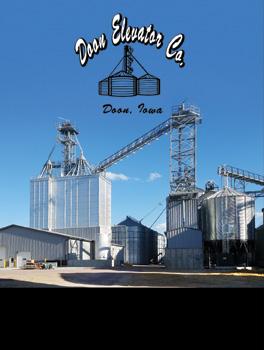
• 1½ teaspoon vanilla
DIRECTIONS:
Boil potatoes for 30-40 minutes or until tender. Peel away skins. Put sugar, eggs, buttermilk and vanilla in a bowl and mix with potatoes. Put in a 9x13-inch casserole dish.
TOPPING:

• 1 cup brown sugar
• 1/3 cup flour
• 1/3 cup butter
Pre-heat oven to 350 degrees. Mix brown sugar, flour and butter and put over the top of the potatoes. Bake for 30 minutes.

INGREDIENTS:
• 5 lbs. potatoes (boil and mash)
• Onion salt
• 1 - 8 oz. carton sour cream
• Pepper and salt
• 2 - 3 oz. Philadelphia cream cheese
DIRECTIONS:
Mix all ingredients together. Can refrigerate (cover with Saran wrap) and reheat next day. Put butter over potatoes when you put them in oven to reheat before serving.
INGREDIENTS:
• 2/3 cup rice
• ½ teaspoon salt
• 3½ tablespoon lemon gelatin
• 1 cup miniature marshmallows
• 15 oz. can pineapple tidbits (drained)
• 2 tablespoons maraschino cherries, coarsely chopped

• 1 cup cream
• ¼ cup sugar
• 1 tablespoon lemon juice
• Dash of salt

DIRECTIONS:
1. Cook rice in 1½ cups water and salt.
2. Dissolve: 3½ tablespoon lemon gelatin in 1 cup boiling water. Pour over rice and chill.
3. Add marshmallows, pineapple, cherries.
4. Beat cream. When soft peaks form, add sugar, lemon juice and dash of salt. Continue beating until stiff. Gently, but thoroughly, fold whipped cream into rice mixture. Chill before serving.
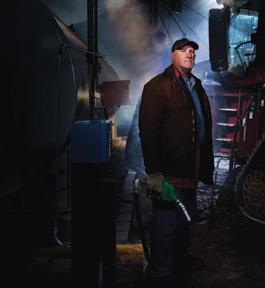
INGREDIENTS:
• ½ stick butter
• ½ cup celery
• ½ cup carrots
• 1 cup diced onions
• 1 teaspoon curry powder
• 3 cups chicken broth
• 2 cups diced potatoes or 2 cups hash browns
• 2 Tablespoons parsley
• ½ teaspoon sage
• 2 cups chopped, cooked turkey

• 2 cups half-and-half

• 1 small package spinach
• Salt and pepper
DIRECTIONS:
Saute butter, celery, carrots and onions. Then add all other ingredients.
• 3 strips bacon, cooked and crumpled
• 1 small onion, diced
• 1 can sliced water chestnuts
• 2 cans cut green beans
• ¼ tsp. salt
• 1 tbsp. brown sugar
• 2 tsp. cornstarch
• ¼ tsp. dry mustard

• 1 tbsp. vinegar
1. Cook the bacon.
2. Brown diced onions and water chestnuts in hot bacon fat.
3. Drain green beans; saving ½ c. liquid.
4. Mix liquid with the remaining ingredients and add to the onions and water chestnuts in skillet.
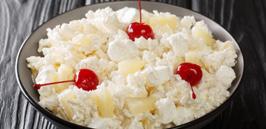
5. Cook, stirring until mixture bubbles.
6. Add green beans; heat thoroughly. If you plan to serve the next day in a slow cooker, there's no need to heat thoroughly after adding the green beans. Just mix it together and put into a bowl to reheat in the slow cooker the next day.
7. Serve topped with crumbled bacon. If you reheat in the slow cooker for the actual meal, wait to add the bacon until just a few minutes before the meal so it stays crispy.

INGREDIENTS:
• 18 oz Golden Graham cereal
• 2 cups peanuts
• ¾ cup peanut butter
• 3 Tablespoons butter
• 1 large bag peanut M&M’s
• 1 large bag plain M&M’s
DIRECTIONS:
Pour melted butter and peanut butter over Golden Graphs and peanuts. Bake at 350 degrees for 15 minutes. Remove from oven and add M&M’s. Store in an airtight container.
 BY Cheryl Smith in Hawarden Quasquicentennial Cookbook
BY Cheryl Smith in Hawarden Quasquicentennial Cookbook
INGREDIENTS:
• 1 8-oz package cream cheese
• 1 cup plus 1 Tablespoon milk, divided

• 1 Tablespoon sugar
• 8 oz Cool Whip, divided
• 1 graham cracker pie crust
• One 15-oz can pumpkin


• Two 3.4-oz packages instant vanilla pudding

• 1 teaspoon cinnamon
• ½ teaspoon ground ginger
• ¼ teaspoon ground cloves

DIRECTIONS:
Beat cream cheese, 1 tablespoon milk and sugar in large bowl with whisk until well blended. Stir in 4 ounces Cool Whip. Spread onto bottom of crust. In separate bowl whisk remaining 1 cup milk, dry pudding mixes and spices until thick. Spread over cream cheese layer. Refrigerate until firm. Serve topped with remaining Cool Whip.





















